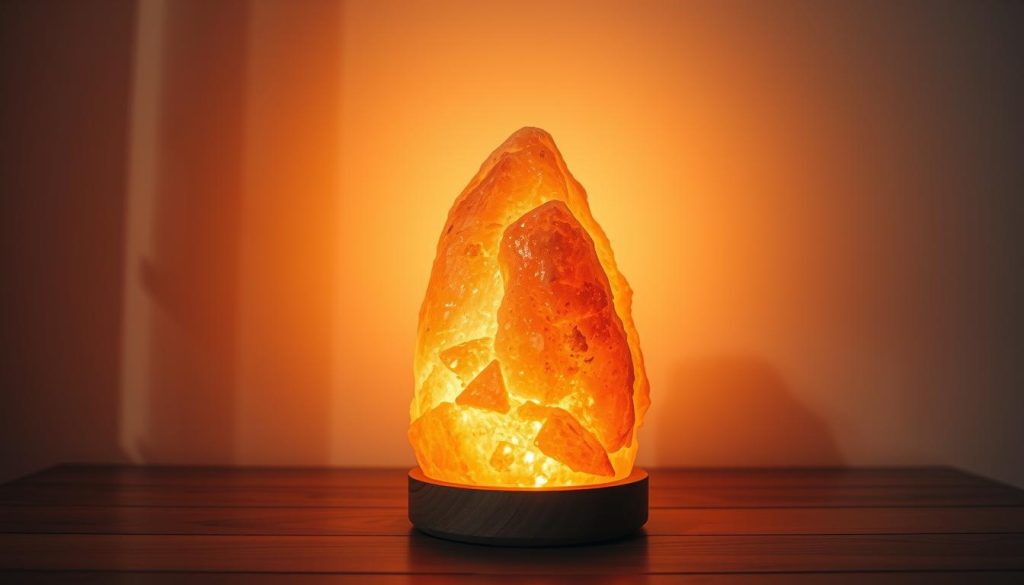Discover the remarkable power of negative ions and their ability to enhance your overall well-being. These tiny, electrically-charged particles have been shown to offer a wide range of health benefits, from improving mood and increasing energy levels to reducing stress and promoting better sleep. By harnessing the potential of negative ions, you can unlock a natural way to boost your physical and mental well-being.
Negative ions are abundantly found in nature, especially near waterfalls, beaches, and mountains. Exposure to these environments rich in negative ions can leave you feeling refreshed, invigorated, and more at peace. As you delve deeper into the science behind negative ions and their interaction with your body, you’ll uncover the surprising ways in which they can positively impact your health and happiness.
Join us as we explore the fascinating world of negative ions and learn how to incorporate their benefits into your daily life. From understanding the science to discovering practical ways to surround yourself with these mood-boosting particles, this article will guide you on a journey towards enhanced well-being and a more energized, balanced lifestyle.
What Are Negative Ions and How Do They Work?
Negative ions are tiny, electrically charged particles that naturally occur in the air. Despite their name, these fascinating molecules can have a profoundly positive impact on our well-being. To understand how negative ions work, let’s dive into the science behind them and explore their interaction with the human body.
Understanding the Science Behind Negative Ions
At their core, negative ions are oxygen atoms that have gained an extra electron, giving them a negative electrical charge. This occurs naturally in environments with moving water, such as waterfalls, beaches, and mountains, where the water molecules break apart and release these charged particles into the air.
Negative ions are believed to neutralize pollutants and allergens by attaching to them, causing them to become too heavy to remain airborne. This process effectively purifies the air, making it easier to breathe and reducing the presence of harmful substances.
How Negative Ions Interact with Your Body
When negative ions enter your body through inhalation, they can trigger a series of physiological responses that contribute to improved well-being. Studies have shown that exposure to negative ions can:
- Increase serotonin levels, a neurotransmitter associated with mood regulation and happiness
- Reduce stress and anxiety by lowering cortisol production
- Improve respiratory function by relaxing the airways and facilitating deeper breathing
- Boost energy levels and mental clarity by increasing blood and oxygen flow to the brain
The interaction between negative ions and the human body is a fascinating example of how the natural world can positively influence our health and well-being. By understanding the science behind these charged air molecules, we can better appreciate their potential benefits and seek out environments rich in negative ions.
The Surprising Health Benefits of Negative Ions
Negative ions, often found in nature, offer a wide range of health benefits that can significantly improve your overall well-being. From enhancing mood and reducing stress to supporting respiratory function and promoting better sleep, the power of negative ions is truly remarkable.
Improved Mood and Reduced Stress
Exposure to negative ions has been shown to have a positive impact on mood and stress levels. Studies have found that negative ions can help alleviate symptoms of depression and anxiety, promoting a greater sense of calmness and relaxation. By reducing the production of stress hormones like cortisol, negative ions contribute to a more balanced and positive emotional state.
Enhanced Respiratory Function and Allergy Relief
Negative ions can also provide significant benefits for respiratory health. By attaching to airborne pollutants and allergens, negative ions help purify the air, making it easier to breathe. This can be particularly beneficial for individuals with allergies, asthma, or other respiratory conditions. Negative ions have been shown to reduce inflammation in the airways, alleviate congestion, and improve overall lung function.

Better Sleep Quality and Increased Energy Levels
The calming effects of negative ions can also translate to improved sleep quality. By promoting relaxation and reducing stress, negative ions can help you fall asleep faster and experience more restful, rejuvenating sleep. Additionally, exposure to negative ions during the day can lead to increased energy levels and enhanced mental clarity, helping you feel more alert and focused throughout your daily activities.
The following table summarizes the key health benefits of negative ions:
| Health Benefit | Description |
|---|---|
| Mood Enhancement | Reduces symptoms of depression and anxiety, promotes calmness and relaxation |
| Stress Reduction | Lowers production of stress hormones, contributes to a more balanced emotional state |
| Respiratory Support | Purifies air by attaching to pollutants and allergens, reduces inflammation, improves lung function |
| Allergy Relief | Alleviates allergy symptoms by reducing airborne allergens and improving respiratory health |
| Sleep Quality | Promotes relaxation, helps with falling asleep faster, and enhances overall sleep quality |
| Energy Boost | Increases daytime energy levels, improves mental clarity and focus |
Where to Find Negative Ions in Nature
While negative ion generators can bring the benefits of negative ions into your home or office, there’s nothing quite like experiencing the power of negative ions in their natural habitats. Nature provides an abundance of negative ions, offering a refreshing escape from the positively charged environments we often find ourselves in.
Waterfalls, Beaches, and Mountains: Nature’s Negative Ion Generators
Some of the best places to soak up negative ions are near waterfalls, beaches, and mountains. The crashing water of a waterfall or the rolling waves at the beach generate large quantities of negative ions, creating an invigorating and rejuvenating atmosphere. Similarly, the pristine air found at higher elevations in the mountains is rich in negative ions, contributing to the fresh and energizing feeling many people experience while hiking or camping.

The negative ion concentrations in these natural environments can be significantly higher than in urban areas. For example:
- Waterfalls can produce up to 100,000 negative ions per cubic centimeter
- Beaches can generate around 2,000 negative ions per cubic centimeter
- Mountains and forests can have negative ion levels ranging from 1,000 to 5,000 per cubic centimeter
In contrast, a typical office or indoor environment may have negative ion levels as low as 100 per cubic centimeter. Spending time in nature allows you to immerse yourself in an environment teeming with beneficial negative ions.
The Impact of Thunderstorms on Negative Ion Concentration
Another fascinating natural phenomenon that boosts negative ion levels is a thunderstorm. The electrical charges generated during a thunderstorm can create an abundance of negative ions in the air. This is why many people report feeling refreshed and invigorated after a thunderstorm passes.
The negative ion concentration during a thunderstorm can reach up to 50,000 per cubic centimeter, which is significantly higher than the average concentration in a natural outdoor setting. The combination of the storm’s electrical activity and the moisture in the air creates the perfect conditions for a surge in negative ions.
Negative Ions Benefits: Harnessing the Power of Nature for Your Well-Being
Immersing yourself in nature is one of the most effective ways to experience the remarkable negative ions benefits for your health and well-being. From the invigorating air near waterfalls and beaches to the refreshing atmosphere following a thunderstorm, nature abounds with opportunities to harness the power of these invisible molecules.
Spending time in environments rich in negative ions can have a profound impact on your mood, stress levels, and overall sense of well-being. Whether you take a leisurely walk through a lush forest, meditate by a babbling brook, or simply open your windows after a rainfall, you’ll be inviting a burst of nature’s rejuvenating energy into your life.

Incorporating regular exposure to negative ions into your lifestyle can lead to a host of positive changes. You may find yourself feeling more energized, focused, and resilient in the face of daily stressors. Your respiratory health may improve, with fewer allergy symptoms and easier breathing. You might even notice an improvement in your sleep quality, waking up feeling more refreshed and ready to tackle the day ahead.
By consciously seeking out natural sources of negative ions, you’re taking a proactive step towards enhancing your overall well-being. So, the next time you have an opportunity to immerse yourself in nature, remember that you’re not only enjoying the beauty of your surroundings but also treating yourself to a powerful dose of nature’s own healing touch.
Incorporating Negative Ions into Your Daily Life
While spending time in nature is the best way to experience the benefits of negative ions, it’s not always possible to escape to a waterfall or beach. Fortunately, there are several ways to bring the power of negative ions into your daily life, even when you’re indoors.
Using Negative Ion Generators at Home and Work
Negative ion generators are devices that release negative ions into the air, mimicking the natural production of these beneficial particles. By placing a negative ion generator in your home or office, you can improve indoor air quality and enjoy the mood-boosting and stress-reducing effects of negative ions.
When choosing a negative ion generator, look for a high-quality device with a strong output of negative ions. Place the generator in areas where you spend the most time, such as your bedroom, living room, or workspace.
Himalayan Salt Lamps: A Natural Source of Negative Ions

Himalayan salt lamps are another popular way to introduce negative ions into your living space. These lamps are made from pink Himalayan salt crystals, which naturally emit negative ions when heated by the lamp’s bulb. In addition to their air-purifying properties, Himalayan salt lamps create a warm, soothing ambiance that can promote relaxation and better sleep.
Houseplants That Emit Negative Ions
Certain houseplants are known to release negative ions into the air, making them a natural and aesthetically pleasing way to improve indoor air quality. Some of the best plants for emitting negative ions include:
- Peace Lily
- Snake Plant
- Spider Plant
- Boston Fern
- Areca Palm
Incorporating these plants into your home or office not only provides the benefits of negative ions but also adds a touch of nature to your surroundings, which can further contribute to a sense of well-being.
The Future of Negative Ion Research and Applications
As scientists continue to explore the potential benefits of negative ions, exciting new applications are on the horizon. Ongoing negative ion research is uncovering fresh insights into how these tiny particles can positively impact our health and well-being. From alleviating symptoms of respiratory conditions to boosting mental clarity and focus, the future looks bright for harnessing the power of negative ions.
In the coming years, we can expect to see a surge in health technology and wellness industry products that incorporate negative ion generators. Air purifiers, wearable devices, and even smart home systems may soon feature built-in negative ion technology to enhance our living and working spaces. By bringing the benefits of nature indoors, these innovative solutions will help us maintain optimal health and vitality, even in urban environments.
Moreover, the integration of negative ion technology into healthcare settings, such as hospitals and therapy rooms, may provide patients with an additional layer of support during treatment and recovery. As we continue to unravel the mysteries of negative ions and their impact on the human body, the possibilities for future applications seem limitless. With ongoing research and development, negative ions are poised to play an increasingly significant role in our quest for improved health and well-being.

